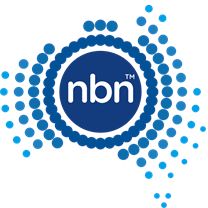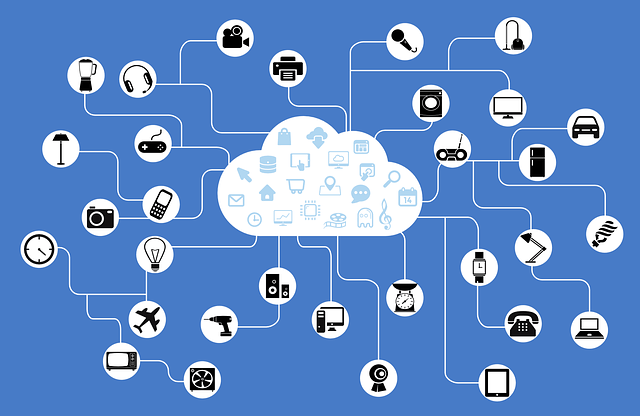How to connect to the NBN
The term ‘NBN’, otherwise known as the National Broadband Network, has been thrown around for the last few years by the TV news, radio programs and newspapers in anticipation of its arrival. And now the rollout has commenced, there are quite a few areas across Australia that have the option available to them to connect to the NBN. This being said, it can be quite confusing to know where to find reliable and explanatory information about what is happening, what is to occur and what you need to do.

We, therefore, decided to put a little bit of information together to help you feel a little more confident and let you know what is happening with the NBN. If you have any further questions, feel free to give 1st Call Electrical a call at 1300 016 671 and we can help you with any enquiries or concerns.
Things to know before you start
There are a few things to consider when starting to consider the switch to the NBN :
- You do not just automatically switch over to the NBN, you must arrange the change over yourself
- You will generally have 18 months from when your area is ‘ready to service’ to make the switch to the NBN
- If you do not transfer over within 18 months, or have not made any attempt to transfer over within that time frame, your old phone and internet services will be permanently disconnected on a ‘disconnection date’
Steps to connect to the NBN
These steps should help you on your way to connect to the NBN. These are general in nature though, so make sure you also complete your own additional research to complement them!
Step 1: Are you ready to connect to the NBN?
The first step in the NBN process is to see if your area is ‘ready for service’. Head to the NBN Co website and insert your address into the ‘check your address’ tool to find out if your area is ready. This tool will also let you know what kind of technology will be used at your address. There are five ‘fixed line’ technology types, including Fibre to the Node (FTTN), Fibre to the Building (FTTB), Fibre to the Curb (FTTC), Fibre to the Premises (FTTP) and Hybrid Fibre Coaxial (HFC). If you are located in a remote or regional area, however, you will likely be connected to a fixed wireless or satellite connection.
If your area isn’t ready, it is still recommended that you start completing some research as to what different service providers have on offer, so when your area is ready, you will be too! If the words ‘Planned’ or ‘Build Commenced’ show up when you complete the search, you can register your email for all relevant updates.
Remember, you generally have 18 months to switch to the NBN or an alternative network (such as a mobile network) once your area is declared ‘ready for service’!
Step 2: Do your research
Now you are aware that your area is ready for service, you need to complete your research to see which service provider has the best options for your needs. A few things to consider when looking at this include :
- How much internet are you going to need?
- How many people will be using the internet at one time?
- Do you require both a telephone service and an internet service? Or just one or the other?
- How much data do you use now (check your bills)? Will you be needing more or less in the future?
- What speeds do you require? This will be largely based on what you will be using your internet for
- Do you have any experience with various providers before? Were you happy with your dealings?
Step 3: Contact an NBN provider
Now, you’ve chosen a provider so it’s time to get in contact with them. Speak to them about what you require and the plan you are thinking of, and they will advise whether this is the best option for your needs. Make sure you have gone over all the terms and conditions of the plan you are wanting and ask any questions you may have before signing up. Always ensure that you advise your provider of any priority service arrangements you may have, so these can be carried over, as well as any special equipment that runs off your landline (such as EFTPOS, fax machines, medical and security alarms).
Step 4: NBN installation day
Once you have signed up for a new plan, your service provider will work with NBN Co to arrange for your services to be switched over. On the day this occurs (you will be advised in advance), there will likely be a small interruption to your service. If you know that you will need the services during that time, ensure you have an alternative arrangement available such as a mobile phone.
What actually occurs on installation day will depend on the technology used in your home or office, therefore your service provider will advise beforehand what is to happen.
After you have been connected to the NBN, you must test all your services to ensure they are working as they should be. Contact your service provider if you experience unexpected or prolonged disruptions to your services during or after the connection process.
What about other devices that connect to the internet?
If you have other devices that connect to the internet, such as fire alarms, security systems or medical alarms, you must contact the device provider to find out whether your particular device is compatible with the NBN and, if not, what are the alternatives.
If you have a medical alarm, there is a Medical Alarm Register on the NBN Co website in which you can register your device for free. This allows the NBN Co to assist in ensuring those with medical devices can receive additional NBN assistance where needed. There is another additional registration offered for additional devices to identify premises where support may be needed to ensure the smallest break in service possible. Check out the Before you connect page on NBN Co for further information.
What about possible NBN issues?
So, you are having a few issues with the NBN after you have connected - what do you do? Who do you contact?
Speed considerations
So, your NBN isn’t at high speeds like you thought it would be. According to the Department of Communications and the Arts, “Under the Government’s Statement of Expectations, NBN Co must deliver a minimum peak wholesale download speed of 25 megabits per second (Mbps) to all premises and at least 50 Mbps to 90 per cent of all fixed-line services as soon as possible.”
It is worthwhile noting that the NBN Co performs a ‘service qualification check’ on each line after an order is placed and they then let the applicable service provider know what speed the network is capable of delivering. It is then the responsibility of your service provider to ensure they can deliver the speeds you have paid for.
There are a few reasons why your broadband speeds may not be as fast as you were hoping, including :
- Your home set-up, such as the type and location of equipment
- Congestion on a particular internet site
- How much capacity does a retailer purchase from NBN Co?
- Video streaming services can also be affected by the content management system that supports the stream and how it is compressed for viewing
- How a service provider has designed its service to run over the NBN infrastructure
- The wiring in your home

It may occur that the wiring or equipment in your home may need updating to be compatible with the NBN. If this is the case, contact your local NBN cabler and they can assist.
Who should you contact for NBN issues?
If you are having issues with the NBN, it is best to contact your service provider initially to see if they can assist. If your problem is to do with the NBN infrastructure, your provider will work directly with NBN Co on your behalf to fix the problem. If your problem is to do with broadband speed, have a local NBN cabler come and check your home’s wiring and also speak to your service provider to see if they can locate an issue. Finally, if you’re not happy with the response that you received from your service provider, contact the Telecommunications Industry Ombudsman (TIO) to make a complaint.

Your qualified NBN cabling specialists
If you have any questions regarding NBN cabling in your home or office, give 1st Call Electrical a call at 1300 016 671 or complete an online job booking form and we can discuss your NBN needs. We have considerable cabling experience across all of Melbourne, so get in contact now!
Resources :
NBN Co: https://www.nbnco.com.au/
Australian Government - Department of Communications and the Arts (Getting ready to connect to the NBN): https://www.communications.gov.au/what-we-do/internet/national-broadband-network/getting-ready-connect-nbn
Australian Government - Department of Communications and the Arts (Connecting to the NBN): https://www.communications.gov.au/what-we-do/internet/national-broadband-network/connecting-nbn
Australian Government - Department of Communications and the Arts (Getting assistance with your NBN service): https://communications.govcms.gov.au/what-we-do/internet/national-broadband-network/getting-assistance-your-nbn-service
Statement of Expectations: http://www.nbnco.com.au/content/dam/nbnco2/documents/soe-shareholder-minister-letter.pdf
Medical Alarm Systems: https://www.nbnco.com.au/residential/learn/device-compatibility/medical-alarms
